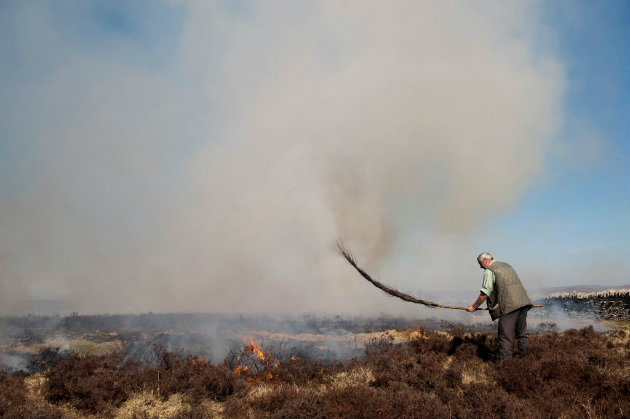Is heather burning doomed?
Pressure groups keep repeating that heather burning is evil and the various bodies bend with the breeze rather than look at the evidence, says Lindsay Waddell

Regular heather burning has been found to improve plant diversity and benefit many species
About a year ago I wrote about looming problems with heather burning, saying that it would become a thing of the past on large areas of the northern uplands. It would appear that my worst fears are to be realised.
There is not a ban on burning everywhere, but it will be an end to burning on what is classed as “blanket bog”.
There is an all-too-familiar feel to this campaign, with far too many comparisons to the recent Bradford Council decision to end grouse shooting on Ilkley Moor. If you repeat the statement enough times it becomes the truth.
Heather burning ‘evil’
That would seem to be the case with burning. The single-issue pressure groups simply repeated that burning was evil and in the end enough of those within Natural England (NE) have decided to bend with the breeze rather than be brave enough to look at the evidence. NE has in Moor House one of the highest areas of moorland in England. Now a National Nature Reserve, it was until the early 1950s a grouse moor of some repute, until it was sold and bought by an arm of the Government.
As part of long-term monitoring of the site, a series of heather burning plots were initiated and are burned on a regular basis, with the shortest rotation being 10 years. Recently, those areas were looked at by a reputable scientist and the plot with the best vegetation mix was the 10-year rotation plot. Vegetation is only part of what makes a good environment, but it is a crucial part of it, as so many other forms of life depend upon some of those plants.
Burning heather: an issue of moorland management
Why do we burn heather moorland? The practice of muirburn – or burning heather, as it’s more commonly known by…
Fury as councillors end shooting on Ilkley Moor
Bradford Council’s Labour Group has refused to renew the grouse shooting lease on Ilkley Moor in a move shooting groups…
“Muirburn could have prevented blaze on Howden Moor,” say keepers
Gamekeepers and countryside groups have stressed the importance of muirburn as a conservation tool, following the fire that destroyed more…
Diversity will decline
The reality is that the longer the timescale between fires, the less diverse the plant community becomes. If vast tracks of the uplands are to become no-go areas for fire, there is no doubt that the diversity will decline. It is also true that NE is to allow cutting of the vegetation as well as what is deemed “restoration burning”, where the aim is to improve the vegetation mix by initially using fire. A contradiction if ever there was one, especially now that it is seeking a voluntary end to all burning on blanket bog. The whole saga is a sorry mess for those who try to manage these sites in a sympathetic manner, with the reality being that more or less every Special Protection Area and Special Area of Conservation is or recently has been a managed grouse moor.
Regular heather burning has been found to improve plant diversity and benefit many species Regular heather burning has been found to improve plant diversity and benefit many species Regular heather burning has been found to improve plant diversity and benefit many species What does that say about the hundreds of thousands of acres that remain “unmanaged”? It would be far better to try to get vast areas of that back into what it deems “suitable management” than to put at risk what it has on its existing notified sites. It will take many years for the wheel to turn, during which time most, if not all, of those responsible for this debacle will have left their posts, no longer accountable for decisions made.
Unpalatable heather
If they really want to know what these moors will look like in 50 years, they need only have a good look at their own site, Moor House, where no long-term rotational burning has been practised. Perhaps it is not as good as they think it is compared with moorland currently under active management. One point of note is the fact that NE removed all the sheep from Moor House so it is unique in terms of English moorland, but the new proposals will leave hundreds of graziers in a very difficult position in a few years once the current crop of young heather becomes long and unpalatable.
Some may think that the changes will result in fewer grouse, leading to less intensive management; fewer gamekeepers on the ground. That may be the case, though having seen very high densities of grouse on Moor House in the past the lack of burning does not seem to impact on the grouse as much as it will on some other species, especially the wading birds.
Long heather fire hazard
On the other hand, change may well lead to new machinery capable of going where no gamekeeper has taken a cutter before, because he had no need to. Faced with vast areas of very long heather, a fire hazard in its own right, keepers will change their ways as necessity is the mother of invention. NE should be wary of what it wishes for.











